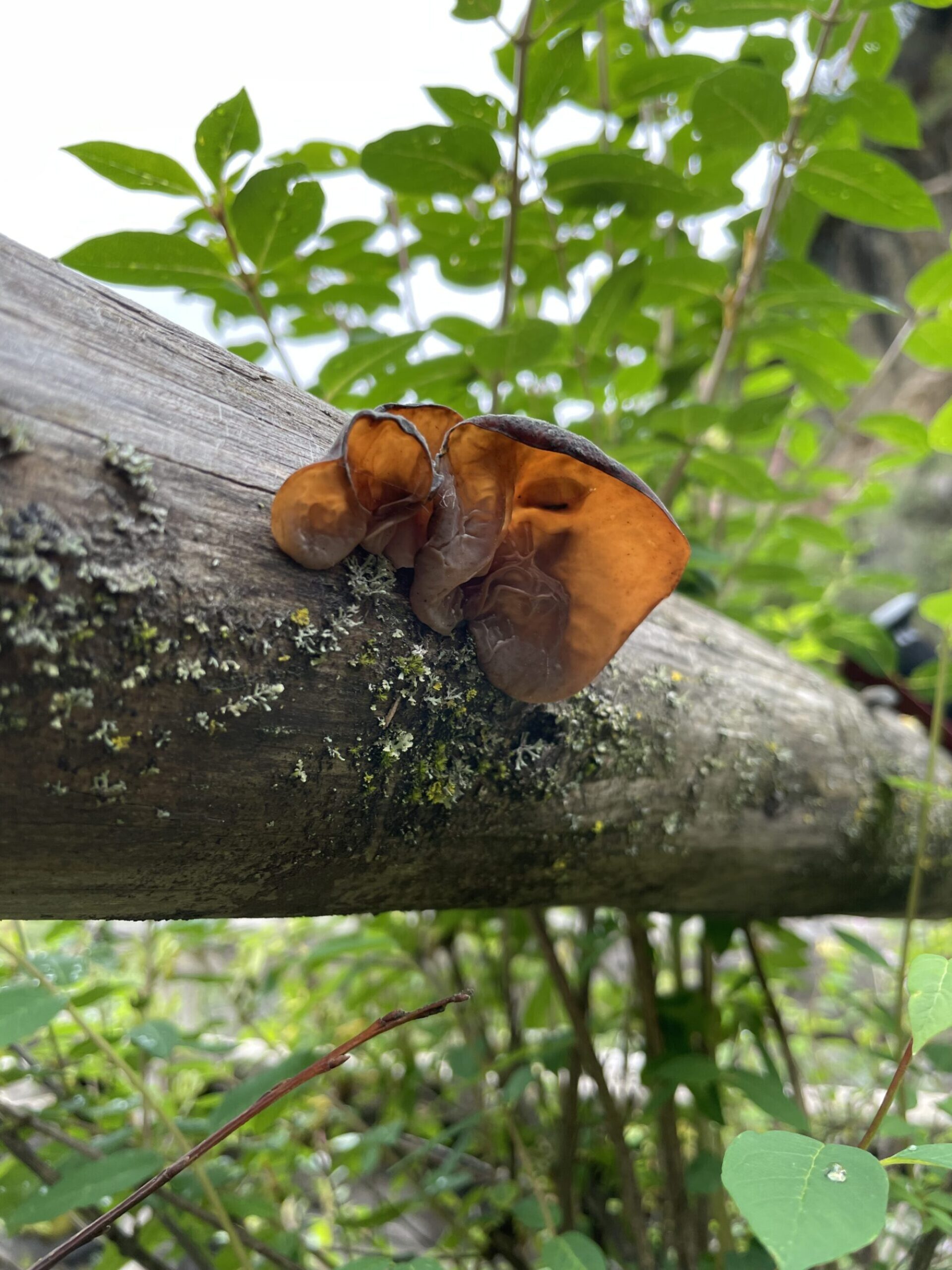Peer-reviewed scientific articles
CAI Feng, GAO Renwai, ZHAO Zheng, DING Mingyue, JIANG Siqi, YAGTU Civan, ZHU Hong, ZHANG Jian, EBNER Thomas, MAYRHOFER-REINHARTSHUBER Michael, KAINZ Philipp, CHENTHAMARA Komal, AKCAPINAR Gunseli Bayram, SHEN Qirong, DRUZHININA Irina. Evolutionary compromises in fungal fitness: hydrophobins can hinder the adverse dispersal of conidiospores and challenge their survival. ISME Journal 14(10):1-15, July 2020
GAO Renwai, DING Mingyue, JIANG Siqi, ZHAO Zheng, CHENTHAMARA Komal, SHEN Qirong, CAI Feng, DRUZHININA Irina. The evolutionary and functional paradox of cerato- platanins in the mycoparasitic fungus Trichoderma: high diversity, stabilizing selection, and a minor role in biotic interactions. Applied Environmental Microbiology, April 2020
PÉREZ-LLANO Yordanis, RODRÍGUEZ-PUPO Eya Caridad, DRUZHININA Irina, CHENTHAMARA Komal, CAI Feng, GUNDE-CIMERMAN Nina, ZALAR Polona, GOSTINČAR Cene, KOSTANJŠEK Rok, FOLCH-MALLOL Jorge Luis, BATISTA-GARCÍA Ramón Alberto and SÁNCHEZ-CARBENTE María del Rayo. Stress Reshapes the Physiological Response of Halophile Fungi to Salinity. Cells, February 2020
HATVANI Lóránt, HOMA Mónika, CHENTHAMARA Komal, KOCSUBÉ Sándor, ATANASOVA Lea, MLINARIC-MISSONI Emilija, MANIKANDAN Palanisamy, REVATHI Rajaraman, DÓCZI Ilona, IVÁNYI Béla, BOGÁTS Gábor, NARENDRAN Venkatapathy, BÜCHNER Rita, VÁGVÖLGYI Csaba, DRUZHININA Irina, KREDICS László. Agricultural systems as potential sources of emerging human mycoses caused by Trichoderma. FEMS Microbiology letters, December 2019
KUBICEK Christian§, STEINDORFF Andrei§, CHENTHAMARA Komal, MANGANIELLO Gelsomina, BERNARD Henrissat, ZHANG Jian, CAI Feng, KOPCHINSKIY Alexey, KUBICEK Eva M, KUO Alan, BARONCELLI Riccardo, SARROCCO Sabrina, NORONHA Eliane Ferreira, VANNACCI Giovanni, SHEN Qirong, GRIGORIEV Igor and DRUZHININA Irina. Evolution and comparative genomics of the most common Trichoderma species. BMC Genomics, June 2019
ZHANG Jian, MIAO Youzhi, RAHIMI Mohammad Javad, ZHU Hong, STEINDORFF Andrei, SCHIESSLER Sabine, CAI Feng, PANG Guan, CHENTHAMARA Komal, XU Yu, KUBICEK Christian, SHEN Qirong, and DRUZHININA Irina. Guttation capsules containing hydrogen peroxide: an evolutionarily conserved NADPH oxidase gains a role in wars between related fungi. Environmental Microbiology, February 2019
DRUZHININA Irina, CHENTHAMARA Komal, ZHANG Jian, ATANASOVA Lea, YANG Dongqing, MIAO Youzhi, RAHIMI Mohammad, GRUJIC Marica, CAI Feng, POURMEHDI Shadi, ABU SALIM Kamariah, PRETZER Carina, KOPCHINSKIY Alexey, HENRISSAT Bernard, KUO Alan, HUNDLEY Hope, WANG Mei, AERTS Andrea, SALAMOV Asaf, LIPZEN Anna, LABUTTI Kurt, BARRY Kerrie, GRIGORIEV Igor, SHEN Qirong, and KUBICEK Christian. Massive lateral transfer of genes encoding plant cell wall-degrading enzymes to the mycoparasitic fungus Trichoderma from its plant-associated hosts. PLOS Genetics, April 2018
QIN Yuan, PAN Xueyu, KUBICEK Christian, DRUZHININA Irina, CHENTHAMARA Komal, LABBÉ Jessy and YUAN Zhilin. Diverse Plant-Associated Pleosporalean Fungi from Saline Areas: Ecological Tolerance and Nitrogen-Status Dependent Effects on Plant Growth. Frontiers in Microbiology, February 2017
PRZYLUCKA Agnes, AKCAPINAR Gunseli Bayram, CHENTHAMARA Komal, CAI Feng, GRUJIC Marica, KARPENKO Juriy, LIVOI Miriam, SHEN Qirong, KUBICEK Christian, DRUZHININA Irina. HFB7 – A Novel Orphan Hydrophobin of the Harzianum and Virens Clades of Trichoderma, Is Involved in Response to Biotic and Abiotic Stresses. Fungal Genetics and Biology, May 2017
DE MAN Tom, STAJICH Jason, KUBICEK Christian, TEILING Clotilde, CHENTHAMARA Komal, ATANASOVA Lea, DRUZHININA Irina, LEVENKOVA Natasha, BIRNBAUM Stephanie, BARRIBEAU Seth, BOZICK Brooke, SUEN Garret, CURRIE Cameron, and GERARDO Nicole. Small genome of the fungus Escovopsis weberi, a specialized disease agent of ant agriculture. PNAS, Proceedings of the National Academy of Sciences, March 2016
YANG Dongqing, POMRANING Kyle, KOPCHINSKIY Alexey, AGHCHEH Razieh Karimi, ATANASOVA Lea, CHENTHAMARA Komal, BAKER Scott E., ZHANG Ruifu, SHEN Qirong, FREITAG Michael, KUBICEK Christian, and DRUZHININA Irina. Genome Sequence and Annotation of Trichoderma parareesei, the Ancestor of the Cellulase Producer Trichoderma reesei. American Society for Microbiology – Genome Announcements August 2015
Book chapters
CHENTHAMARA Komal, DRUZHININA Irina, RAHIMI Mohammad, GRUJIC Marica, and CAI Feng. “Ecological genomics and evolution of Trichoderma reesei”. Springer – Trichoderma reesei ‐ Methods and Protocols, January 2021
RAHIMI Mohammad, CAI Feng, GRUJIC Marica, CHENTHAMARA Komal, and DRUZHININA Irina. Molecular Identification of Trichoderma reesei”. Springer – Trichoderma reesei ‐ Methods and Protocols, January 2021
CHENTHAMARA Komal, DRUZHININA Irina. “Ecological Genomics of Mycotrophic Fungi”. Springer – THE MYCOTA, Environmental and Microbial Relationships, Volume IV, Third Edition, March 2016
List of first author conference papers (Scientific posters)
CHENTHAMARA Komal, STEINDORFF Andrei, GOJIC Vladimir, SHELEST Ekaterina, GRIGORIEV Igor, KUBICEK Christian, DRUZHININA Irina. “The comparative genomics of the most common Trichoderma species reveals the unique pattern of the ankyrin domain-containing proteins in orphomes of individual Trichoderma species”; Poster: Joint Genome Institute User Meeting, Walnut Creek, San Francisco, USA, April 2019
CHENTHAMARA Komal, CAI Feng, VON ROTZ Sebastian, CERVENKA Isabella, SHEN Qirong, DRUZHININA Irina. “The enrichment in hydrophobin-encoding genes constitutes the main genomic hallmark of Trichoderma: the pattern search revealed a plethora of unknown genes absent in other hypocrealean fungi”; Poster: Joint Genome Institute User Meeting, Walnut Creek, San Francisco, USA, April 2019
CHENTHAMARA Komal, GOJIC Vladimir, BAJTELA Robert, DRUZHININA Irina. “Decoding the expanded Ankyrin-Repeat gene family in Trichoderma”; Joint Genome Institute User Meeting, Walnut Creek, San Francisco, USA, March 2018
CHENTHAMARA Komal, CAI Feng, PRZYLUCKA Agnieszka, SHEN Qirong, BAYRAM AKCAPINAR Günseli, DRUZHININA Irina.: “The origin and architecture of Trichoderma hydrophobome”; Poster: Joint Genome Institute User Meeting, Walnut Creek, San Francisco, USA, March 22, 2017, in “Abstract Book”, (2016), S.24
CHENTHAMARA Komal, CAI Feng, PRZYLUCKA Agnieszka, SHEN Qirong, BAYRAM AKCAPINAR Günseli, DRUZHININA Irina. “The origin and architecture of Trichoderma hydrophobome”; Short-talk and poster: Vienna young Scientists Symposium, TU WIEN, June 6, 2017; in “Abstract Book”, (2016), S90-91
DRUZHININA Irina, ATANASOVA Lea, CHENTHAMARA Komal, GRUJIC Marica, HENRISSAT Bernard, ZHANG Jian, SHEN Qirong, GRIGORIEV Igor, KUBICEK Christian. Horizontal gene transfers drove the mycoparasite Trichoderma to adapt to saprotrophy and cellulase production. Talk: 13th European Conference on Fungal Genetics, 3-6, April 2016, Paris, France; in “Abstract Book”, (2016), S.70.
CHENTHAMARA Komal, ATANASOVA Lea, YANG Dongqing, ZHANG Jian, KOPCHINSKIY Alexey, GRIGORIEV Igor, KUBICEK Christian, SHEN Qirong, DRUZHININA Irina. Phylogenomics of Trichoderma. Poster: ECFG12- 12th European conference on fungal genetics, Seville, Spain; 23.3.-27.3. 2014. S: 184




